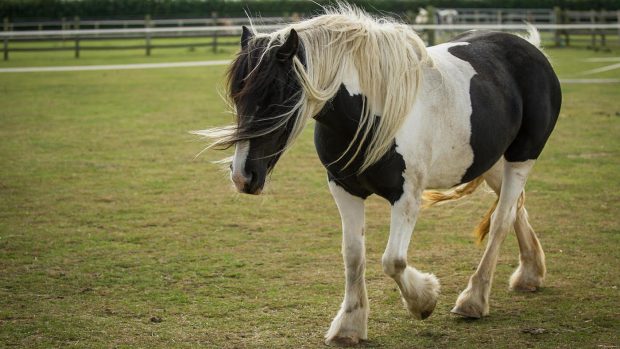A study currently being carried out by the British Equine Veterinary Association (BEVA) could provide the first definitive answers on the best ways to treat laminitis.
One of its co-ordinators, Dr Celia Marr MRCVS, hopes that by the end of 2007 BEVA will have “definite evidence” to advise vets on three vital issues — medical therapy, the best way to support the feet and recommendations for exercise restriction.
Dr Marr, a specialist in internal medicine at Rossdale and Partners, Newmarket, says that about 7% of horses and ponies in the UK are affected by laminitis. The condition can be fatal, especially in older animals. A four-year study on causes of equine deaths, carried out on animals in retirement, showed that it accounted for 7.4%.
Laminitis has been causing pain for centuries, and many methods of treating it have been suggested. Some, such as standing horses in cold running water, have been dismissed as old wives’ tales. However, some researchers now believe that cold therapy could actually be important and the BEVA survey will, it is hoped, provide the first answers to this and other questions via evidence-based medicine (EBM).
“EBM means trying to put together, in a rigorous and carefully documented way, details about the effects of specific treatments, then looking critically at the outcome,” says Dr Marr.
“What we’re trying to do is collect information in this way so we can come up with something better than we’ve had in the past. For instance, horses with laminitis obviously need painkillers, but what sort and for how long?
“Many vets use drugs to dilate the blood vessels. We know changes in blood vessels probably happen before the clinical signs of laminitis, but is it better to give vasodilating drugs or are they a waste of time?
“Is getting an owner to stand a horse’s feet in water for 2hr a day useful or a waste of time, and should the water be hot or cold? What is the best way of managing the feet and how should we be advising owners to limit exercise?”
While researchers and vets know more than ever about the causes of laminitis, they don’t have specific guidelines on the best methods of treatment — which is where the study comes in. Owners whose horses contract laminitis between now and the end of 2007 and their vets are being asked to take part by filling in a questionnaire at the outset and answering a phone questionnaire eight weeks later.
“Most research is done by a small number of people in specialised places,” says Dr Marr. “This gives every vet the chance to contribute — and we hope that by getting enough owners to join in we can make a real difference.”
When the study — funded by the British Veterinary Association Animal Welfare Foundation, Merial Animal Health and Arnolds Veterinary Ltd — is completed, Prof Dirk Pfeiffer at the RVC will carry out statistical analysis.
Cases will be graded using two recognised systems — the Obel system and another devised by vet and laminitis specialist Dr Robert Eustace based on structural changes within the hoof.
“There is no point in comparing mild cases with severe ones, so within each group, ‘matched pairs’ will be picked out to compare,” says Dr Marr.
One of the benefits of the survey is that it should provide help that is within the financial reach of all owners.
“Preventing laminitis has to be the ‘gold option,’ but we have to accept that it will always happen,” acknowledges Dr Marr. “But most of the things we do with laminitis cases don’t actually cost very much — things like supporting the feet and putting them in water.
“If you’re unlucky enough to have an animal with laminitis, this survey is something positive you can do. We do need to find out the most effective methods of treatment.”
- This veterinary feature was first published in Horse & Hound (27 October, ’05)




